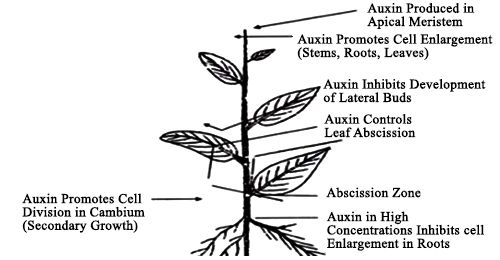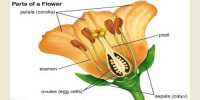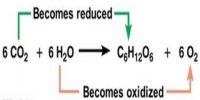The physiological effects of Auxin:
The primary physiological effect of auxin in plants is to rouse the elongation of cells in the shoot. A very general example of this can be observed in phototropic curvatures where the unilateral light unevenly distributes the auxin in the stem tip.
The higher concentration of auxin on the shaded side causes the cells on that side to elongate more rapidly resulting in bending of the stem tip towards the unilateral light. Many theories have been proposed to explain the mechanism of cell elongation due to auxin. Other Physiological effects:
- Auxins are well known to promote the elongation of the stem. It promotes the growth by elongation of cells behind the apical meristem.
- Cells increase in length with the effect of auxin.
- Auxin helps plants to absorb more water.
- Auxin creates dominance in the growth of apical buds, called apical dominance. Apical buds grow rapidly, because of the presence of auxin at a large amount in the tropical regions.
- Growth in the lateral bud is inhibited when the apical bud of a tall plant remains intact. However, the lateral bud grows rapidly on the removal of apical buds.
- Auxin initiates the formation of roots.
- Auxin helps in the formation of fruits without pollination and fertilization.
- Auxin increases the rate of respiration.
- Auxin helps in the formation of seedless fruits.
- Auxins stimulate cell division in cambium and also in the primary meristems.
- Auxins induce root formation at low concentrations. This is made use of by horticulturists to induce root formations in stem cuttings.
- Auxin prevents leaf fall by suppressing the formation of the abscission layer.
- It promotes the growth of root-only at extremely low concentrations. At higher concentrations, it always inhibits the growth of the root.
Suppression of growth in the lateral bud by apical bud due to auxin produced by apical bud in termed as apical dominance. The reason for this is due to auxin produced in growing tip and it stimulates growth but as it moves downwards, suppresses growth in the stems below.
Auxin is responsible for the initiation and promotion of cell division in the cambium, which is responsible for secondary growth. This property of induction of cell division has been exploited for tissue culture techniques and for the formation of callus.














